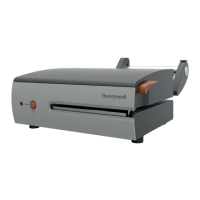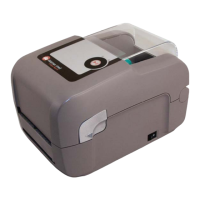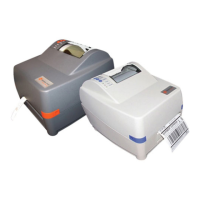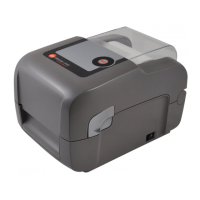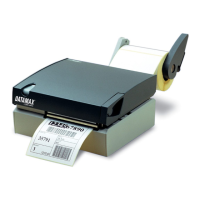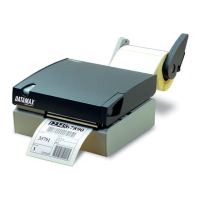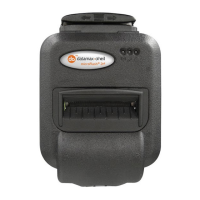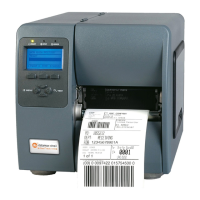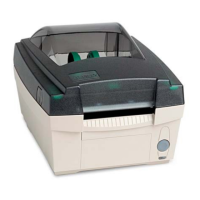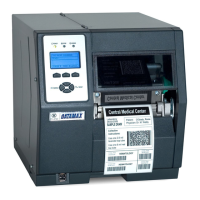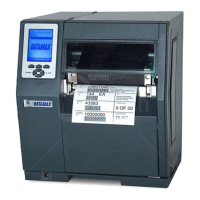Chapter 4 – Menu System 39
COLUMN
EMULATION
Allows the column dots per inch to be adjusted (153 - 203 dots), so that numbers
smaller than the printhead resolution reduce the printed output from right to left,
where:
XXX Dots
ROW EMULATION Allows the row dots per inch to be adjusted (103 - 303), so that numbers smaller
than the printhead resolution enlarge the height of the printed output and numbers
larger reduce it, where:
XXX Dots
SOP EMULATION Allows label positioning commands to function with backward compatibility when
printing label formats designed for legacy models, where:
DISABLED Produces the natural start of print position. (Default Setting)
110 (PRODPLUS) Emulates the Prodigy Plus® start of print position.
220 (ALLEGRO) Emulates the Allegro® start of print position.
250 (PRODIGY) Emulates the Prodigy™ start of print position.
When changing these values, the printer will automatically feed two labels to establish the
new print position.
BACK AFTER PRINT Determines media movement when a cutter, present sensor, peel and present, or
GPIO is enabled, where:
MODE
Repositions media, where:
DISABLED Movement occurs only when the next label is ready to print, minimizing edge
curling. (Default Setting)
ENABLED
Movement occurs according to BACKUP DELAY timing after a cut, cleared sensor,
or SOP to allow fastest throughput.
BACKUP DELAY
(1/50s)
Instructs the printer to retract a presented label after a specified time elapses (0 –
255, in one-fiftieth of a second increments), where:
000 Retraction occurs when the next label is received and processed. (Default Setting)
FONT EMULATION Allows font substitution for all internal fonts (see examples), where:
STANDARD
FONTS
Prints using a standard (internal) font. (Default Setting)
CG TIMES Prints using the CG Times font.
USER ID S50 Prints using a downloaded font.
LABEL STORE Determines the command recall level used when retrieving stored label formats,
where:
STATE & FIELDS Recalls the printer state (i.e., heat, speed settings, etc.) and the label-formatting
commands for the stored label. (Default Setting)
FIELDS ONLY Recalls the label-formatting commands for the stored label.
MENU LANGUAGE Selects the menu and configuration label language. Only languages that are
resident will be displayed (see Appendix D), where:
ENGLISH Enables English (Default Setting)
DISPLAY SETTINGS
Determines the appearance of the items in the display, where:
GRAPHIC DISPLAY
MODE
Determines the magnification of the displayed items, where:
STANDARD
Is the normal setting.
ENHANCED Is the enlarged setting.
DISPLAY UNITS Determines the displayed type of distance information, where:
STANDARD Displays the information according to the UNITS OF MEASURE setting (see above).
IMPERIAL Displays the information in inches.
METRIC Displays the information in millimeters and centimeters.
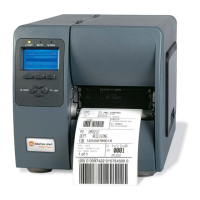
